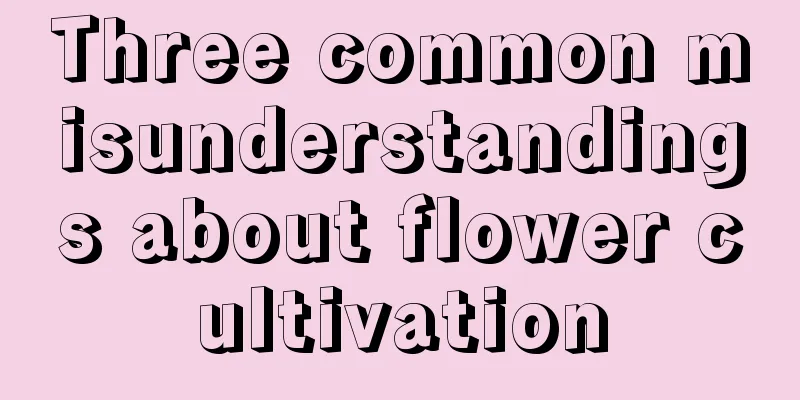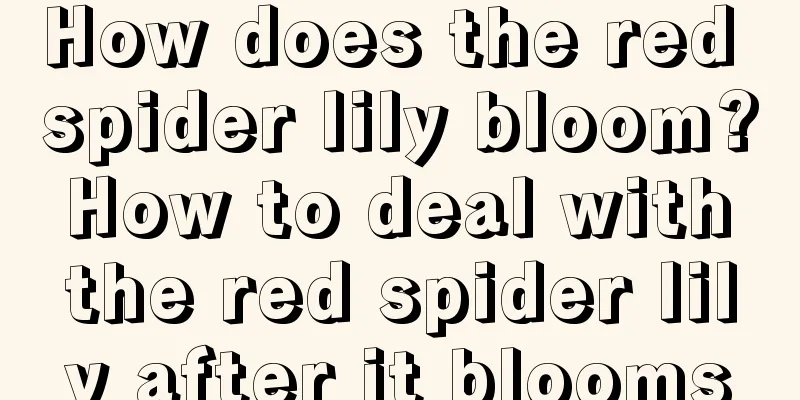Three common misunderstandings about flower cultivation

Misconception 1: Water more.Giving flowers more water in summer does not necessarily mean more is better. You can water it once in the early morning every day, and water it again in the evening depending on the dryness of the soil in the pot. Try not to water it during the day. When watering, make sure water flows out from the bottom of the pot. For some flowers with fleshy roots, such as Clivia, the amount of watering must be controlled. If the flowers "drink too much water", it is very easy to cause root rot. This type of flower cannot withstand excessive exposure to the sun, so you can spray some water on the leaves when it is relatively dry at noon. However, some flowers that are more drought-resistant, such as cacti and succulent plants of the Crassulaceae family, should "drink less water" as too much water can easily cause root rot. Misconception 2: Place it indoors.The summer sun is strong, so we simply moved the flowers indoors. However, they will not grow well due to lack of sunlight. Flowers that prefer the sun are not afraid of strong sunlight, but they still need appropriate shade at noon. If it is neutral, appropriate sun protection is required. If it is a potted flower on the balcony, it can be moved indoors between 10 am and 3 pm every day. If it is negative, absolutely avoid contact with strong light. Misconception 3: Apply too much fertilizer.If you apply too much fertilizer, the flowers will not be able to absorb it and the root system will be damaged. Of course, the flowers that bloom in summer are generally more resistant to high temperatures, so you can apply more fertilizer. For example, crape myrtle, jasmine, impatiens, cockscomb, dahlia, etc., you can apply additional fertilizer during the flowering period to make it lush. For some fruit-viewing flowers, such as kumquat and pepper, applying phosphorus fertilizer after the flowers fade can make them produce more fruits. Tropical foliage plants, such as rubber trees and monstera, should be topdressed with nitrogen fertilizer to make their leaves greener. Applying thin fertilizers frequently or too high a concentration can easily cause fertilizer damage. |
<<: Do your flowers need watering?
>>: Tips for gardening: Environmentally friendly pest control methods for gardening at home
Recommend
How to grow azaleas better and more vigorously? How to grow potted azaleas at home
We usually buy rhododendrons with pots, and some ...
Can scale insects be eradicated with alcohol? Are there any other methods?
1. Can it be eradicated? If you pay attention to ...
Top ten high-yielding rice varieties
1. Huiliangyousi Miao The Huiliangyousi Miao vari...
Is wheat a coarse grain?
1. Is it Wheat is not a coarse grain, but a type ...
What is the best month to plant long beans?
When to plant long beans Long beans are usually p...
How to cultivate garlic orchid
one. Growth habit If you want to grow a plant wel...
How to maintain the succulent lotus
Succulent lotus growing conditions The succulent ...
What are some plants that don't need sunlight at all?
1. Gastrodia elata Gastrodia elata is a perennial...
Planting techniques and methods of copper coin grass
The pennywort is a relatively easy plant to grow....
Can I water the rose when it is blooming?
Watering rose flowers The flowering period of ros...
Taboos of drinking golden lotus soaked water
Characteristics of Nasturtium Nasturtium is a pla...
Can daisies be planted in the yard?
Can I grow daisies in my yard? Daisies can be pla...
What fertilizer is best for rapeseed when it turns green?
The greening period of rapeseed is a critical per...
What should I do if my asparagus fern grows a very long branch?
1. Cut it off directly If asparagus fern grows a ...
How many years does it take for pears to bear fruit? How long does it take for pears to bear fruit?
Pear planting results after several years Pear tr...









